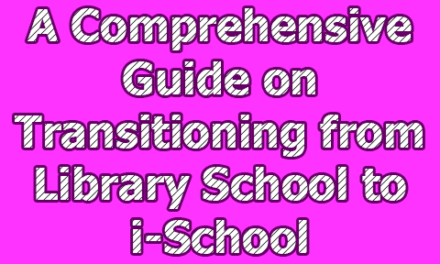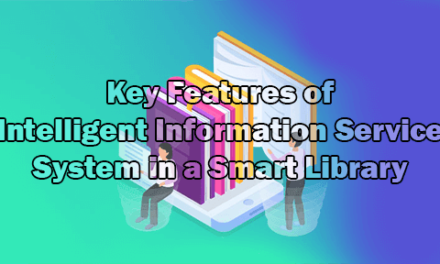Book Selection Tools and Guides: Building Robust Library Collections
Book selection is an essential aspect of managing a library’s collection effectively. Librarians and information professionals play a pivotal role in choosing materials that cater to the diverse needs and interests of library users. The process involves identifying new and popular titles, critically evaluating materials, and ensuring that the collection remains relevant. To achieve these goals, librarians rely on a variety of book selection tools and guides. This article explores book selection tools and guides: building robust library collections.
1. Publisher and Vendor Catalogs:
Publisher and vendor catalogs are valuable resources for librarians when it comes to selecting materials for their collections. These catalogs are typically produced by publishers and vendors to showcase their new and forthcoming titles. Librarians can access these catalogs in print or digitally, either by requesting physical copies or by visiting the publisher’s website. Here’s how publisher and vendor catalogs assist in book selection:
1.1. Identifying New Titles: Publisher catalogs provide librarians with a preview of the books that will soon be available. This allows librarians to stay up-to-date with the latest publications in various genres and subjects.
1.2. Curating Collections: Librarians can use these catalogs to curate collections that align with their library’s mission and the needs of their patrons. For example, an academic library may focus on acquiring textbooks and scholarly publications, while a public library may prioritize popular fiction and non-fiction.
1.3. Negotiating Purchases: Publishers often offer special discounts and promotions to libraries for bulk purchases. By reviewing catalogs, librarians can identify potential titles of interest and negotiate favorable terms for acquiring them.
1.4. Diverse Selection: Publisher catalogs encompass a wide range of genres and subjects, enabling librarians to diversify their collections to cater to the interests of a diverse user base.
2. Professional Journals and Reviews:
Professional journals and reviews provide librarians with critical evaluations of books and other materials. These reviews serve as an essential resource for assessing the quality and suitability of materials for a library’s collection. The following are examples of professional journals and reviews:
2.1. Library Journal: The Library Journal is a widely recognized publication that features reviews and recommendations for a broad range of library materials. Its reviews cover everything from books and e-books to databases and multimedia resources.
2.2. Booklist: Published by the American Library Association (ALA), Booklist offers expert reviews, recommendations, and thematic lists for librarians. It covers both fiction and non-fiction titles.
2.3. School Library Journal: Designed for school librarians, this journal provides reviews and insights into books and materials suitable for children and young adults. It helps school librarians make informed selections for their collections.
2.4. Choice: Choice is a publication from the Association of College and Research Libraries (ACRL) that focuses on academic materials. It provides reviews and recommendations for academic librarians.
2.5. Kirkus Reviews: Kirkus Reviews is an independent review source known for its concise and informative book reviews. It covers a wide range of genres and is utilized by librarians to assess popular fiction and non-fiction titles.
3. Bestseller Lists:
Bestseller lists are valuable tools for librarians to gauge the popularity of titles in specific genres or categories. They offer insights into what books are currently in high demand among readers. Some well-known bestseller lists include:
3.1. The New York Times Bestseller List: The New York Times compiles and publishes bestseller lists for various categories, including fiction, non-fiction, and children’s books. It is a highly regarded indicator of a book’s commercial success.
3.2. Publishers Weekly Bestseller List: Publishers Weekly provides a weekly list of bestselling books, making it an essential resource for librarians seeking to acquire popular titles for their collections.
3.3. Amazon Bestsellers: Amazon’s bestseller lists offer real-time data on the popularity of books across different genres and formats. While not a traditional industry list, it reflects consumer preferences.
3.4. Genre-Specific Lists: Some publications and websites offer bestseller lists tailored to specific genres, such as mystery, romance, science fiction, or self-help. Librarians can use these lists to identify popular titles within niche categories.
4. Awards and Honors:
Awards and honors are significant indicators of a book’s quality and impact. Librarians often use these accolades to identify high-quality materials for their collections. Some notable awards and honors include:
4.1. The Pulitzer Prize: The Pulitzer Prize is one of the most prestigious awards in the world of literature. It recognizes excellence in various categories, including fiction, non-fiction, history, and poetry.
4.2. The National Book Award: The National Book Award honors outstanding books in fiction, non-fiction, poetry, and young people’s literature. It has a long history of celebrating exceptional literary works.
4.3. The Caldecott Medal: The Caldecott Medal is awarded annually to the most distinguished American picture book for children. It acknowledges excellence in children’s book illustration.
4.4. The Newbery Medal: The Newbery Medal recognizes outstanding contributions to children’s literature. It is awarded to the author of the most distinguished contribution to American literature for children.
4.5. Booker Prize: The Booker Prize (Man Booker Prize) is a renowned literary award that celebrates the best novel written in English and published in the United Kingdom or Ireland.
4.6. Hugo Awards: The Hugo Awards honor excellence in science fiction and fantasy literature. Librarians interested in acquiring speculative fiction can look to these awards for guidance.
5. Subject Bibliographies:
Subject bibliographies are curated lists of recommended books and other materials on specific topics or subjects. These bibliographies serve as valuable resources for librarians looking to build collections related to particular themes or academic disciplines. Examples of subject bibliographies include:
5.1. MLA International Bibliography: The Modern Language Association (MLA) International Bibliography focuses on literature, languages, linguistics, and related fields. Librarians can use it to identify scholarly publications in these areas.
5.2. ERIC Database: The Education Resources Information Center (ERIC) database provides access to education-related literature, including books, articles, and reports. School and academic librarians can utilize ERIC to select educational resources.
5.3. Medical Subject Headings (MeSH): Medical librarians often refer to MeSH, a comprehensive controlled vocabulary thesaurus, to select books and resources related to medical and healthcare topics.
5.4. Art Bibliographies: Librarians responsible for art collections can consult specialized art bibliographies, such as the Getty Research Institute’s Bibliography of the History of Art (BHA), to identify art-related materials.
5.5. Business Source: Business librarians can turn to Business Source, a database providing access to business literature, to select books and resources on various aspects of business and management.
Subject bibliographies help librarians make informed decisions about which materials to acquire to support research, learning, and exploration in specific fields of knowledge.
6. Collection Development Tools:
Collection development tools provide librarians with guidance on selecting materials that align with their library’s mission, goals, and user base. These tools help librarians create collections that meet the unique needs of their patrons. Some commonly used collection development tools include:
6.1. Library of Congress Subject Headings (LCSH): The Library of Congress Subject Headings is a standardized system used to categorize and organize library materials. Librarians employ LCSH to ensure consistent subject access to their collections.
6.2. Dewey Decimal Classification System: The Dewey Decimal Classification System is a widely used system for classifying library materials by subject. It aids in organizing and arranging books on shelves in a logical and accessible manner.
6.3. Ranganathan’s Five Laws of Library Science: Developed by Indian librarian S. R. Ranganathan, these laws provide foundational principles for library collection development, emphasizing user needs and efficient organization.
6.4. Collection Development Policies: Libraries often create collection development policies that outline their selection criteria, scope, and priorities. These policies serve as important guidelines for librarians when choosing materials.
6.5. Patron Surveys and Feedback: Librarians may conduct surveys and gather feedback from patrons to understand their preferences and needs. This direct input from users helps inform collection development decisions.
6.6. Resource Allocation Tools: Collection development tools may include budgeting and resource allocation guidelines to help librarians allocate funds efficiently and make informed purchasing decisions.
7. User Feedback:
User feedback is a dynamic and invaluable resource that allows librarians to understand the interests and needs of their patrons. Librarians actively engage with library users to gather input and insights through various methods, such as surveys, focus groups, and one-on-one interactions. Here’s how user feedback enhances the book selection process:
7.1. Tailored Collections: User feedback enables librarians to tailor their collections to the specific preferences and requirements of their community. It ensures that the library remains relevant and responsive to changing demands.
7.2. Identifying Gaps: By listening to user feedback, librarians can identify gaps in their collections. If users express interest in a particular genre, topic, or author, librarians can work to fill those gaps.
7.3. Promoting Engagement: Knowing what interests users helps librarians promote engagement with the collection. They can organize events, book clubs, and programs that align with users’ interests.
7.4. Enhancing Services: User feedback can also inform decisions about additional services, such as interlibrary loans, digital resources, and extended operating hours, to better meet patrons’ needs.
7.5. Building Community: Libraries that actively seek and respond to user feedback can foster a sense of community and collaboration. Users appreciate when their opinions are valued and integrated into library operations.
In conclusion, book selection tools and guides are essential resources for librarians and information professionals as they navigate the complex task of building and maintaining library collections. These tools encompass a wide range of resources, from publisher catalogs to professional reviews, bestseller lists, awards, subject bibliographies, and collection development guidelines. Additionally, user feedback plays a pivotal role in ensuring that library collections remain dynamic and responsive to the ever-evolving needs and interests of patrons.
By using a combination of these tools and strategies, librarians can create collections that are diverse, relevant, and engaging. Whether in academic, public, school, or specialized libraries, the art of book selection continues to evolve, driven by the commitment of librarians to provide users with access to the best and most suitable materials available. In an age of information abundance, the role of librarians as curators and guides remains as crucial as ever in helping users navigate the vast world of knowledge and literature.

Library Lecturer at Nurul Amin Degree College










